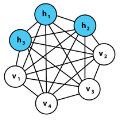
The inverse Potts problem to infer a Boltzmann distribution for homologous protein sequences from their single-site and pairwise amino acid frequencies recently attracts a great deal of attention in the studies of protein structure and evolution. We study regularization and learning methods and how to tune regularization parameters to correctly infer interactions in Boltzmann machine learning. Using $L_2$ regularization for fields, group $L_1$ for couplings is shown to be very effective for sparse couplings in comparison with $L_2$ and $L_1$. Two regularization parameters are tuned to yield equal values for both the sample and ensemble averages of evolutionary energy. Both averages smoothly change and converge, but their learning profiles are very different between learning methods. The Adam method is modified to make stepsize proportional to the gradient for sparse couplings. It is shown by first inferring interactions from protein sequences and then from Monte Carlo samples that the fields and couplings can be well recovered, but that recovering the pairwise correlations in the resolution of a total energy is harder for the natural proteins than for the protein-like sequences. Selective temperature for folding/structural constrains in protein evolution is also estimated.
翻译:暂无翻译


